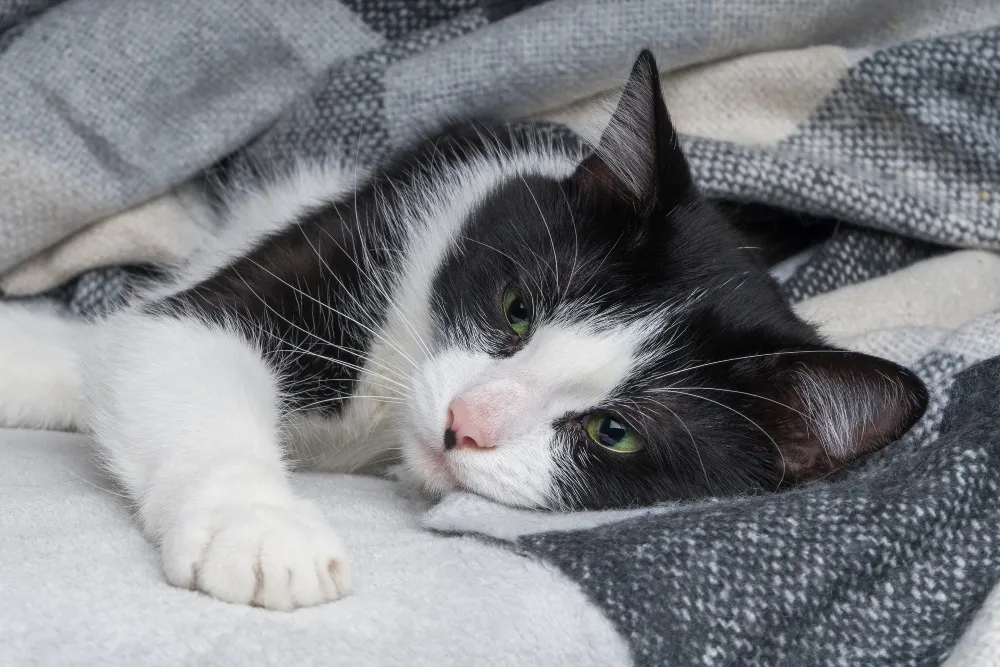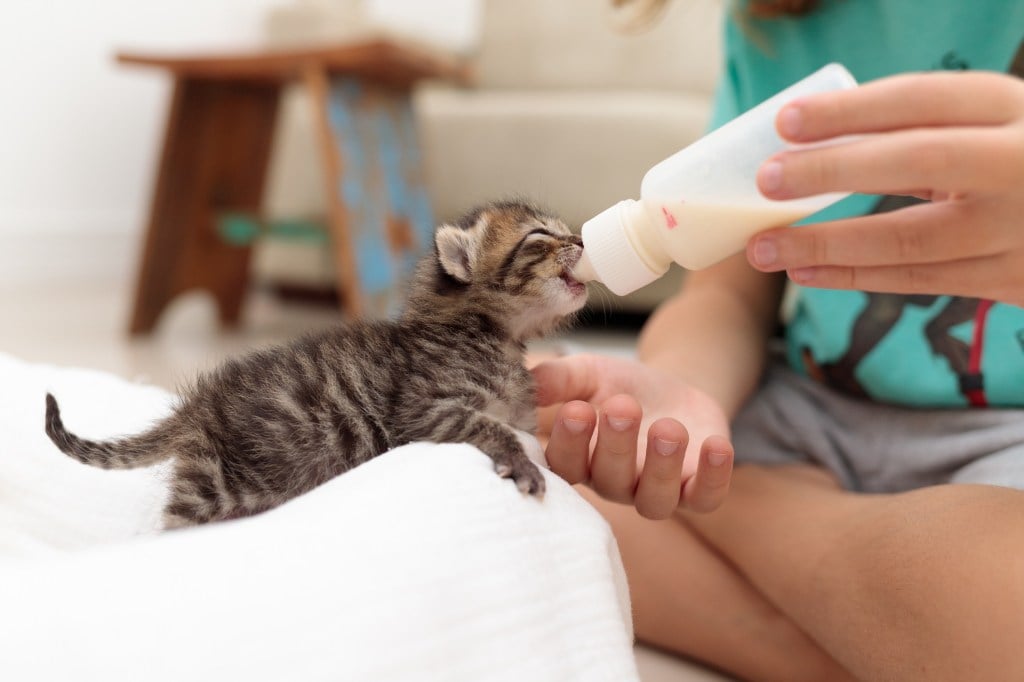Table of Contents
Key Takeaways
- Cats that are young and immunocompromised are most likely to get pneumonia.
- Feline pneumonia is caused by bacteria, viruses, or fungi.
- Symptoms of pneumonia in cats include difficulty breathing, coughing, and wheezing.
- A vet may take x-rays and blood samples to diagnose pneumonia.
- Keeping up with vaccines and limiting contact between cats can prevent pneumonia.
Young and immunocompromised cats are commonly affected by pneumonia, which can lead to respiratory difficulty and low oxygenation of the blood. Pneumonia is an inflammatory disease that damages the functional tissue of the lung known as the parenchyma. This tissue is responsible for effective gas exchange when healthy cats breathe. However, with pneumonia, the lungs become flooded with inflammatory cells, leading to fluid buildup within the air sacs. This lung consolidation impairs breathing, and affected cats can become very sick without appropriate intervention.
What causes feline pneumonia?
Pneumonia is most commonly caused by viruses, bacteria, or fungi. Some cats with pneumonia may have multiple infectious organisms that are contributing to the disease.
Viruses
Viral causes of pneumonia in cats include feline calicivirus and feline herpesvirus, which are spread orally, through contact with other infected cats, or through inhalation. Feline infectious peritonitis (FIP) virus is also a less common cause of pneumonia, but it is not spread between cats. Viral agents can cause extensive damage to a cat’s respiratory tract, which can predispose them to secondary bacterial infections.
Bacteria
Bacterial agents are often opportunistic pathogens, which means they are able to overcome the body’s protective barriers once another infectious agent (like a virus) has weakened the immune system. The most common bacteria that cause pneumonia in cats include Bordetella bronchiseptica, Mycoplasma, and Pasteurella. They are usually highly contagious and may spread from cat to cat under the right conditions.
Fungi
Fungal causes of pneumonia can include Histoplasma capsulatum and Cryptococcus species. Usually these organisms are limited to certain regions in the United States. Histoplasma is found primarily in the Midwest and Eastern portions of the country, whereas Cryptococcus is more widespread. Cats become infected by inhaling spores from soil that is enriched by bird or bat droppings.
Symptoms and clinical signs of pneumonia
The most common clinical signs manifest as upper respiratory issues, including:
- Increased respiratory rate and effort (difficulty breathing)
- Frequent coughing – coughing may or may not produce mucus depending on the severity and type of infection.
- Intermittent wheezing
- Fatigue
- Lack of appetite
- Fever
A veterinarian will use his or her stethoscope to listen for abnormal or absent lung sounds. If crackles are heard, this may indicate fluid buildup and should be further addressed. Absent lung sounds indicated lung consolidation.
Diagnosing feline pneumonia
Taking a thorough history and performing a physical exam are essential. There are a number of tests that can be done to support a diagnosis of pneumonia, but chest radiographs (x-rays) and bloodwork are usually the first steps. Radiographs can show evidence of consolidation, inflammation within the lung, and other abnormal areas that may be contributing to the clinical signs. Viral pneumonia may be difficult to identify on radiographs, whereas bacteria and fungi are generally more distinct in appearance. Bloodwork is used to detect inflammation or infection by looking at white cell counts.
Fungal infections usually affect other organ systems concurrently. It is common to see enlarged lymph nodes, gastrointestinal upset, weight loss, and eye abnormalities with Histoplasma infections. Cryptococcus tends to cause thick nasal discharge, skin lesions, and neurological problems. If a fungal organism is suspected, sampling the urine or lymph node may be warranted.
Taking a sample from the lung may be helpful, but increased risk for complications exists. These samples can be submitted for additional testing to identify the cause and determine an appropriate treatment in difficult cases. Sometimes testing nasal discharge can also be helpful.
Cat pneumonia treatment
Supportive therapy is necessary regardless of the cause, such as providing fluids and oxygen support to help affected cats feel much better.
There are a few things you can do at home to help your cat feel more comfortable. Although some cats do not tolerate nebulization well, it can be a helpful therapy to remove mucus from the respiratory tract. As an alternative, placing a cat in a steamy room, such as when a hot shower is running, for 5-10 minutes can also provide some relief. Additional therapies are recommended based on the specific cause for the pneumonia.
In both viral and bacterial infections, your veterinarian will prescribe antibiotics. Although the antibiotic will not cure a viral infection, it will help eliminate or reduce the severity of a secondary bacterial infection while the cat is immunocompromised. Antibiotics are administered for several weeks.
Fungal infections require antifungal drugs, such as itraconazole or fluconazole, to be administered for several months because these infections are harder to resolve. Some antifungal therapies can negatively affect the liver, so checking bloodwork throughout treatment is recommended.
Radiographs should be rechecked regularly (usually every two weeks) during treatment to monitor effectiveness of the chosen therapy. Once the radiographs suggest that the pneumonia has fully resolved, treatment is continued for an additional 1-2 weeks to ensure complete resolution.
Is cat pneumonia preventable?
Although there is not a universal way to prevent pneumonia in cats, there are ways to reduce the risk of disease. Ensuring cats are up to date on vaccinations can keep them healthy and protected. Cats who have received vaccines against calicivirus and herpesvirus (both part of the feline distemper vaccine) have increased protection against developing viral pneumonia. Because bacterial pathogens are highly contagious, limiting contact between cats is also helpful. To reduce the risk of fungal pneumonia, cats should be kept indoors and away from heavily soiled areas where they may come in contact with spores.
The content is not intended to be a substitute for professional veterinarian advice, diagnosis, or treatment. Always seek the advice of your veterinarian or other qualified health provider with any questions you may have regarding a medical diagnosis, condition, or treatment options.






